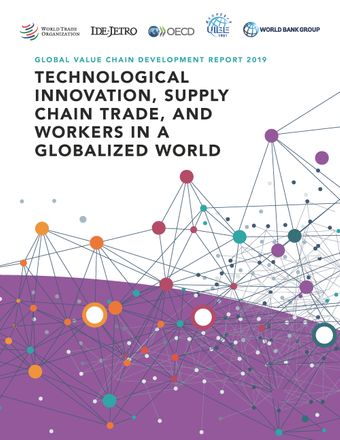Improving the accounting frameworks for analyses of global value chains

- By: World Trade Organization
- Source: Global Value Chain Development Report 2019 , pp 155-177
- Publication Date: April 2017
- DOI: https://doi.org/10.30875/37edc817-en
- Language: English
- Previous Chapter
- Table of Contents
- Next Chapter
The use of global input-output tables, and the creation of Trade in Value-Added (TiVA) statistics, has greatly improved our understanding of the fragmentation of global production through value chains. However, their application requires a number of assumptions that, in practice, typically understate the degree of interconnectedness. TiVA estimates implicitly assume identical production functions across firms within an industry, when in reality production functions differ considerably. Typically, larger (and foreign-owned) firms tend to be more trade oriented than smaller (and domestically-owned) firms. As a result, TiVA statistics underestimate the import content of exports for the economy as a whole, a key indicator characterizing global production. Moreover, TiVA analyses are based on basic price concepts, which provide an appropriate view of production through value chains, but are less well equipped to analyse consumption, particularly as they exclude significant distribution margins (in particular retail and wholesale activities, often including marketing activities and brands), which add value at the end of the chain. This can distort analyses using “smile curves”, which show the distance from final demand of different sectors within value chains, and in turn understate the scale of jobs supported by trade.
-
From This Site
/content/books/9789287049681c012dcterms_subject,pub_countryId-contentType:WorkingPaperSeries -contentType:Periodical -contentType:BookSeries -contentType:ReportSeries105


